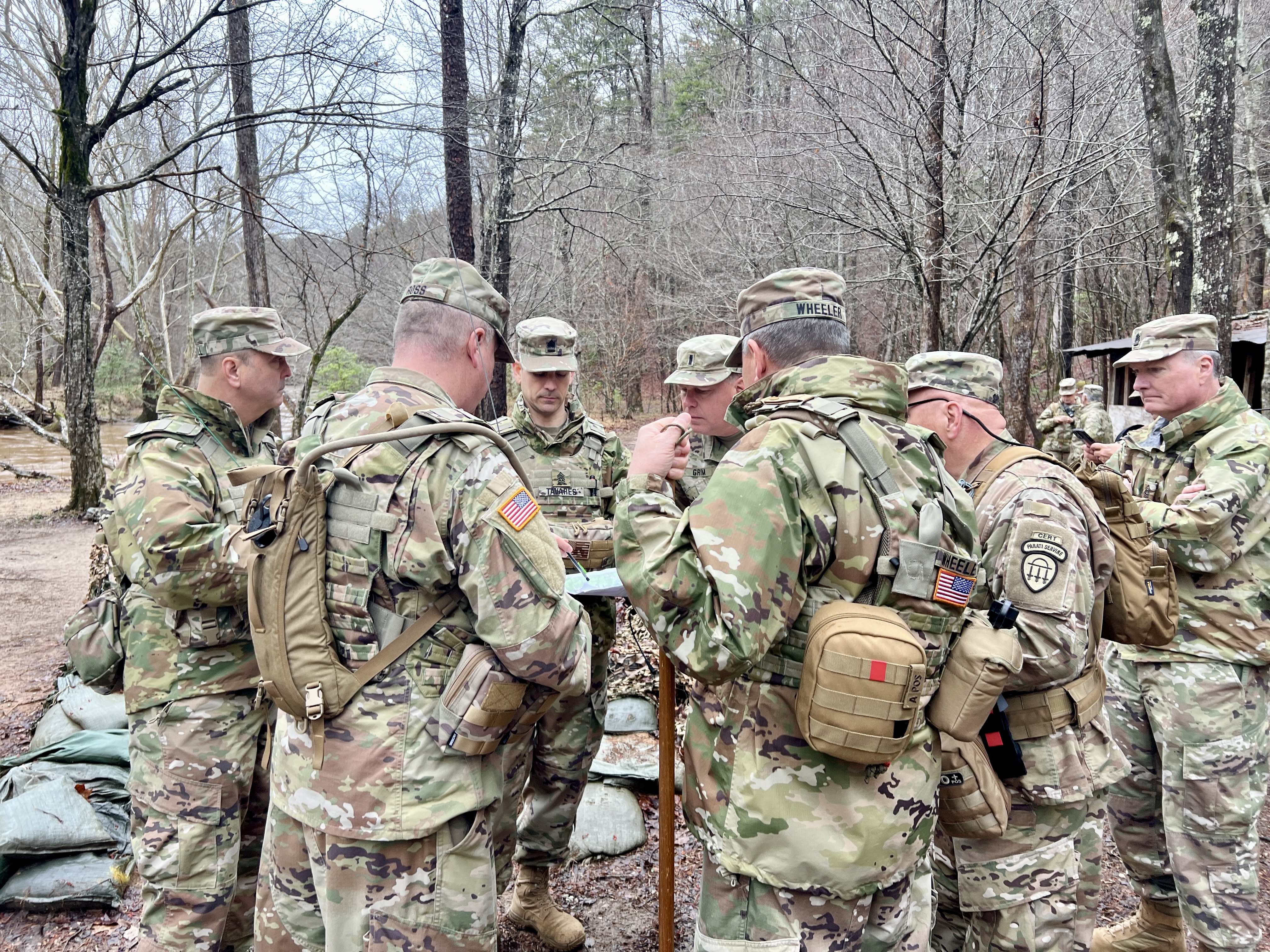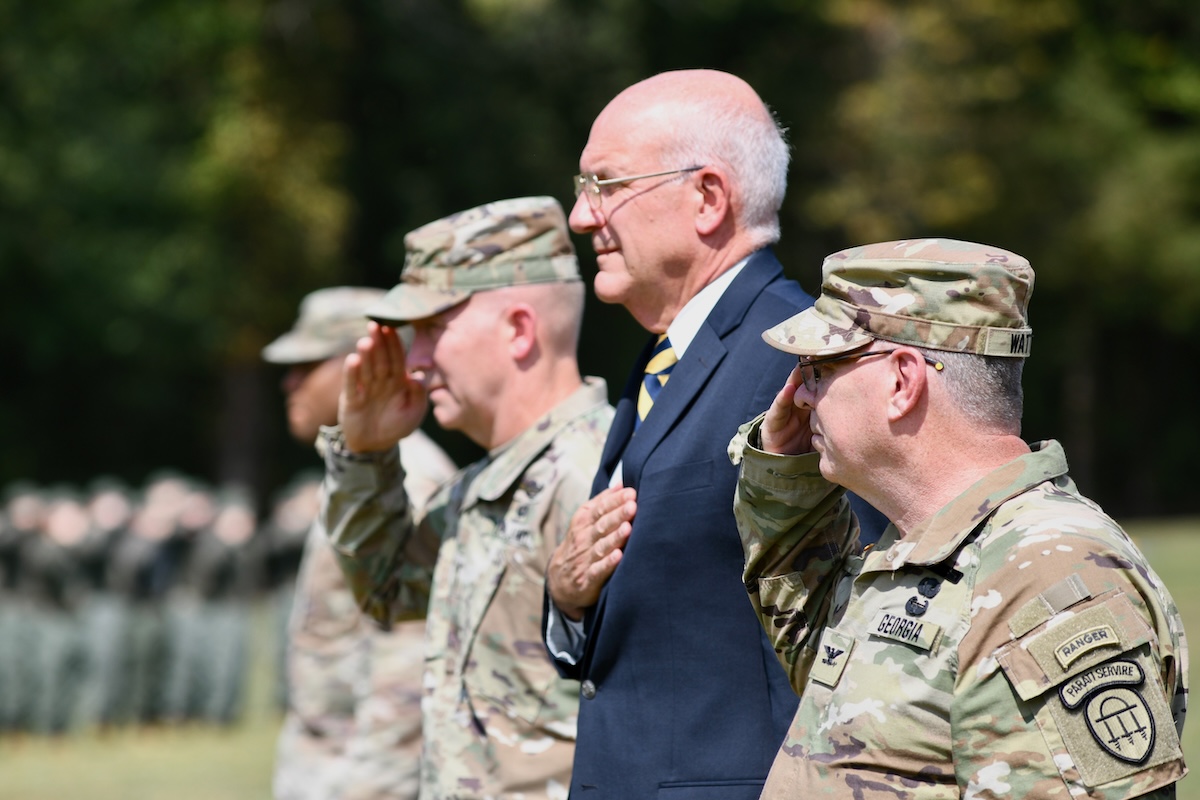Real-World Readiness: GSDF Soldiers Erect 50-Patient Mobile Field Hospital
Real-World Readiness: GSDF Soldiers Erect 50-Patient Mobile Field Hospital
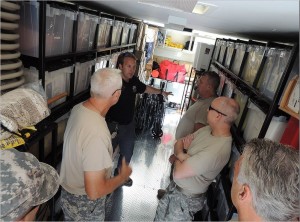
Georgia State Defense Force (GSDF) Soldiers listen as Matthew Crumpton, Healthcare Training and Exercise Manager for the Georgia Department of Public Health’s Office of Emergency Preparedness and Response, explains the layout of the “Mobile Medical Asset” trailer during a GSDF training exercise, Aug. 13, 2016, at Kennesaw State University’s Marietta campus in Marietta, Ga. (Georgia State Defense Force photo by Chief Warrant Officer 2 Clunie)
KENNESAW STATE UNIVERSITY, Marietta, Ga., Aug., 13, 2016 — In an impressive display of readiness, Georgia State Defense Force (GSDF) Soldiers handily erected a 50-patient mobile field hospital—one of eight throughout the state—while demonstrating “real-world” emergency preparedness capabilities that could save lives during a catastrophe.
The 911th Support Battalion and 132nd Medical Battalion of the 76th Support Brigade led the exercise, executed after several months of planning and coordination. Soldiers from GSDF’s HHC (Headquarters and Headquarters Company), G3 (Operations and Training), Office of the Staff Judge Advocate, and TRADOC (Training and Doctrine Command) also joined the training, so that Soldiers from multiple units would be familiar with the activity.
“We could potentially be deployed anywhere in Georgia,” 1st Lt. Duncan, from the 911th Support Battalion and the Officer in Charge of the exercise, said in referring to an emergency or catastrophic event. “Having Soldiers ready, willing, and able to serve in this capacity helps us provide assistance to others much faster.”
Mobile Medical Units
The Georgia Department of Public Health’s Division of Health Protection provided the two 28-foot “Mobile Medical Asset” trailers used for the training exercise. The trailers each weigh approximately 11,000 pounds. They contain various medical equipment and supplies—from cots and disposable linens to stethoscopes and sterilizers—necessary for operating a fully functional field hospital.
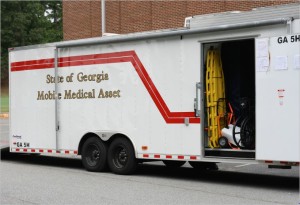
This Georgia Department of Public Health “Mobile Medical Asset” trailer contains equipment and supplies for erecting a field hospital. (Georgia State Defense Force photo by Chief Warrant Officer 2 Clunie)
The trailers house massive tents. Once inflated, the tents transform into the mobile units that serve as various sections of the hospital. The largest of the mobile units is 22’ x 42’. When all mobile units are completely erected, they cover an area nearly the size of a football field. The mobile medical units are sturdy, and have generators to power air conditioners, heating units, and light fixtures.
The mobile units could operate indefinitely as a hospital. One operated for four months following a tornado that ripped through Americus, Ga., in March 2007. The tornado left the hospital with broken windows and a partially sheared façade, rendering it inoperable.
“Our mobile hospitals can operate as any other hospital would operate,” said Matthew Crumpton, Healthcare Training and Exercise Manager for the Georgia Department of Public Health’s Office of Emergency Preparedness and Response. Crumpton pointed out that these structures can be used during emergencies, as well as in non-emergency maximum-capacity situations, such as when brick-and-mortar hospitals are full.
In addition to the Marietta location, other mobile medical units are pre-positioned in Albany, Augusta, Clayton County, Columbus, Gainesville, Macon, and Waycross. However, mobile medical units can be dispatched anywhere throughout the state.
Ready to Serve
Following preliminary instructions, GSDF Soldiers peeled off their military blouses and tackled the mammoth operation with zeal. The exercise involved removing the massive mobile units (tents) and other equipment from the trailers, erecting the medical units, and later disassembling them.
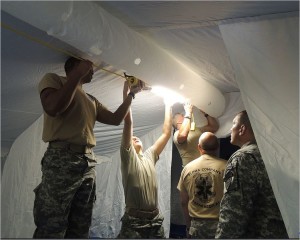
Georgia State Defense Force Soldiers install lighting in the mobile medical hospital as a part of their training during this exercise, Aug. 13, 2016, at Kennesaw State University’s Marietta campus in Marietta, Ga. (Georgia State Defense Force photo by Chief Warrant Officer 2 Clunie)
Georgia Department of Public Health representatives were on hand for Saturday’s exercise. They assisted Sgt. 1st Class Stewart, of the 132nd Medical Battalion, who served as the Noncommissioned Officer in Charge of the exercise, in providing direction and guidance to the Soldiers. Soldiers will demonstrate these skills again at Annual Training (AT) 2016.
“Realistic training is imperative to fulfill our ability to assist in meaningful medical care during a crisis situation,” said Lt. Col. Greene, Command Surgeon of the GSDF. “This training will be further enhanced at AT 2016, with a full mass-casualty exercise involving members of the 76th Support Brigade, along with members of the 5th Brigade, in erecting, staffing, and operating a mobile surge hospital.”
Col. Williams, Commander of GSDF’s 76th Support Brigade, spoke with Soldiers during a break in the training, thanking them for dedicating their time and effort during a non-drill weekend.
“This is real-world,” said Col. Williams. “If needed, the GSDF can now conduct this critical activity throughout the state. It’s another value we bring to the citizens of Georgia.”
